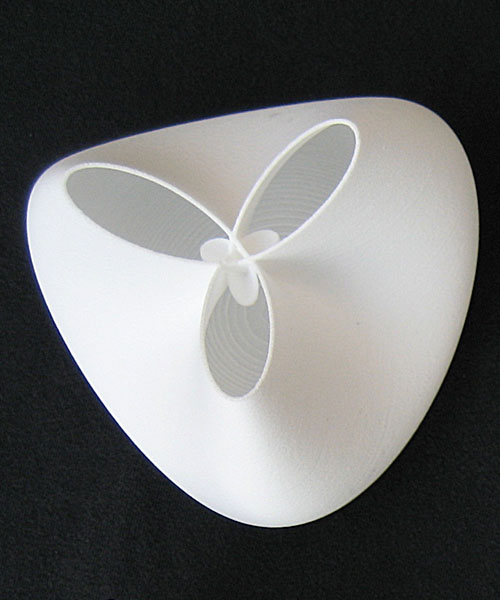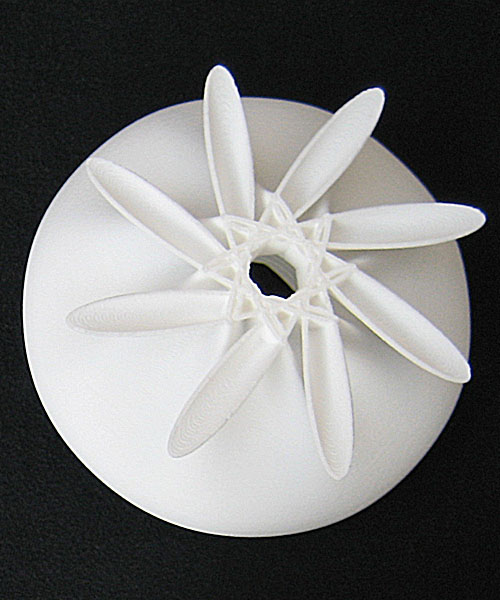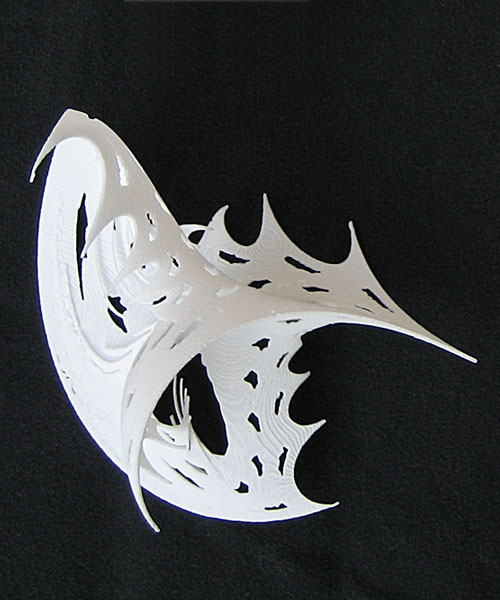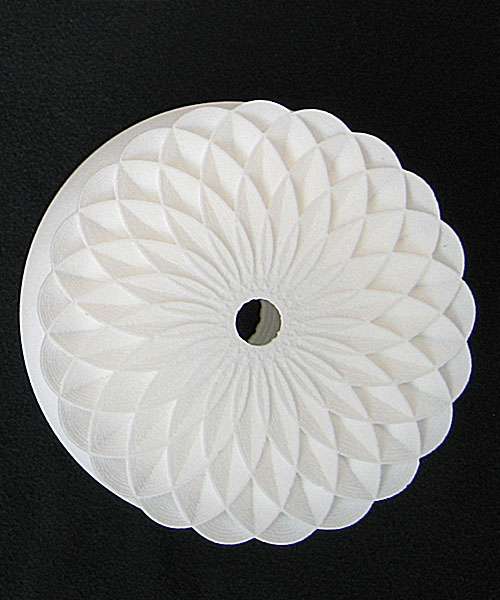Peter Jansen
"3b"
Sls print, polyamide, 10cm X 10cm X 6.5cm, 2007.

This equation was used by Michael Field and Martin Golubitsky to demonstrate
how Chaos could yield symmetry. This attractor is an example of a two dimensional
attractor converted to a three dimensional one; values of z are not used for
x and y calculations.
6 parameters : Degree, Alpha, Beta, Lambda, Gamma and Omega
(from: Chaoscope)
"8c"
Sls print polyamide, 10cm X 10cm X 5.5cm, 2007.

This is a print of a strange attractor, type Icon, degree 8
"Sortie de Secours"
(Nicolas Desprez)
Sls print, polyamide, 10cm X 10cm X 6cm, 2007.

This is a print of a strange attractor, type Unravel The only equation created
for Chaoscope. The idea was to have an attractor from which the orbit couldn't
escape, regardless of its parameters, without using trigonometric functions
(like Pickover does) thus achieving a relatively good rendering speed. The first
attempt was to use a polynomial-like equation, and limit the volume the orbit
could evolve into to a unit cube. Each time the orbit was leaving the cube space
it would reappear near the opposite face, inside the cube. The best result obtained
was remotely looking like a Menger Sponge. Later, the cube was replaced by a
sphere of radius R and the equation was simplified. The best looking attractors
are found setting R to a negative value, which makes no sense considering the
concept behind the equation, leaving the author puzzled.
6 parameters : A, E, U, L, N, V and R
(from: Chaoscope)
"21e"
Sls print, polyamide, 10cm X 10cm X 5cm, 2007.

This is a print of a strange attractor, type Icon, degree 21
Peter Jansen,
Nijmegen, Netherlands
Freelance artist.
www.strangeattractors.eu
"As an artist nowadays the computer is my main instrument in making sculptures.
I was strangely attracted to the beautiful renderings with Chaoscope
of 3d strange attractors.
When I read on the forum it wouldn't be possible to make them as real life forms
I got enormously triggered.
So after a lot of exercising it was possible at the end to make almost perfect
meshes from the pointcloud data that Chaoscope with the help of Nicolas Desprez,
can produce.
After that I could make solids out of it and repair the .stl files so they could
be printed in polyamide (sls). In the very near future I hope to be able to
cast them in bronze."